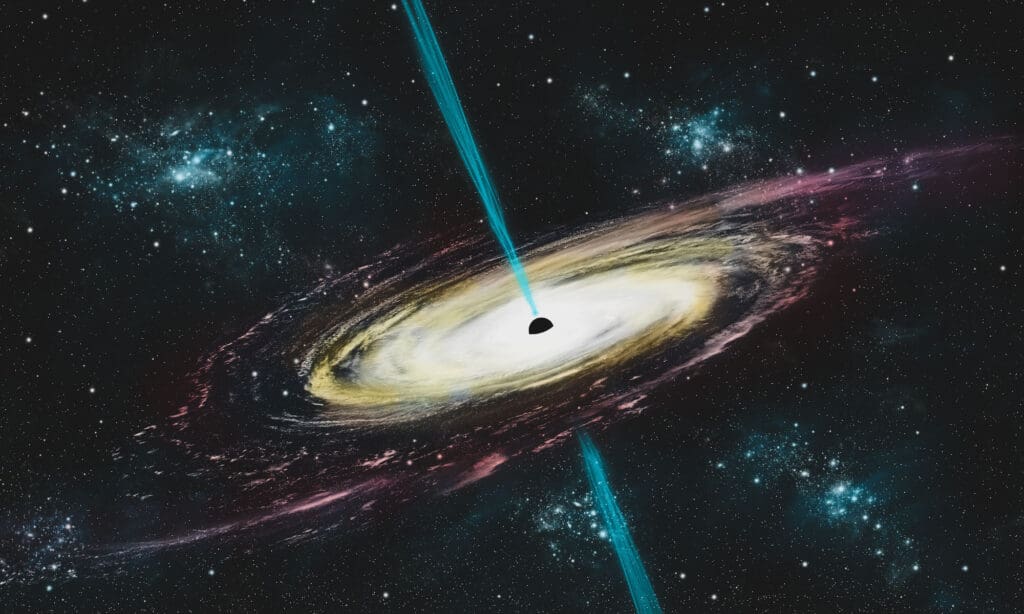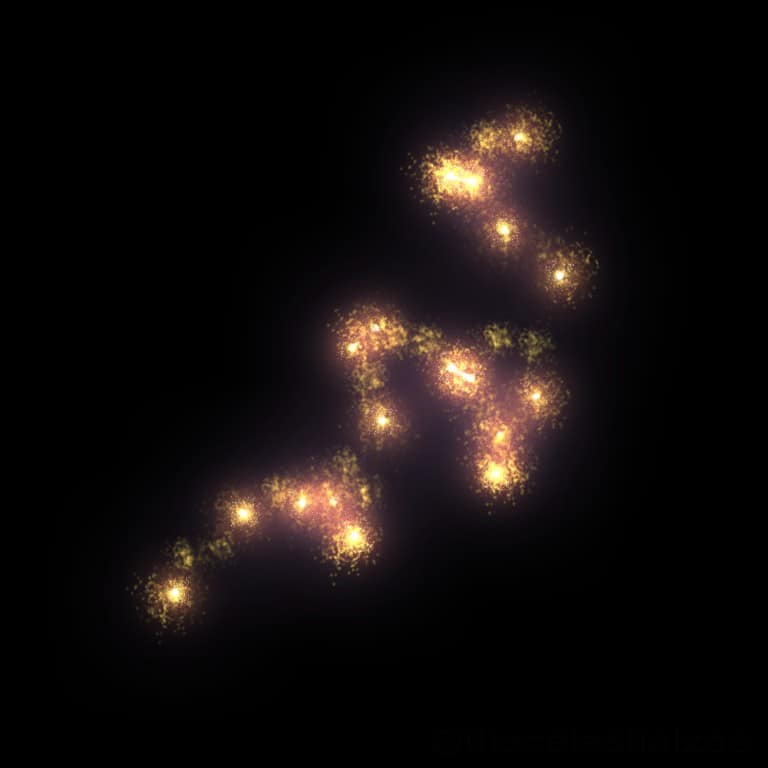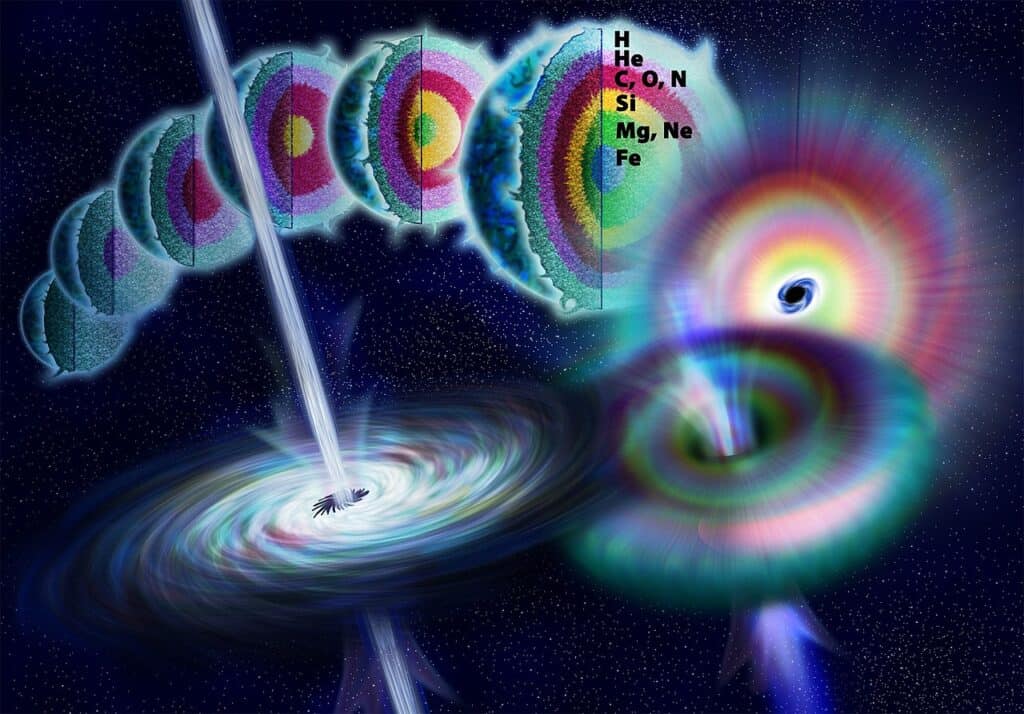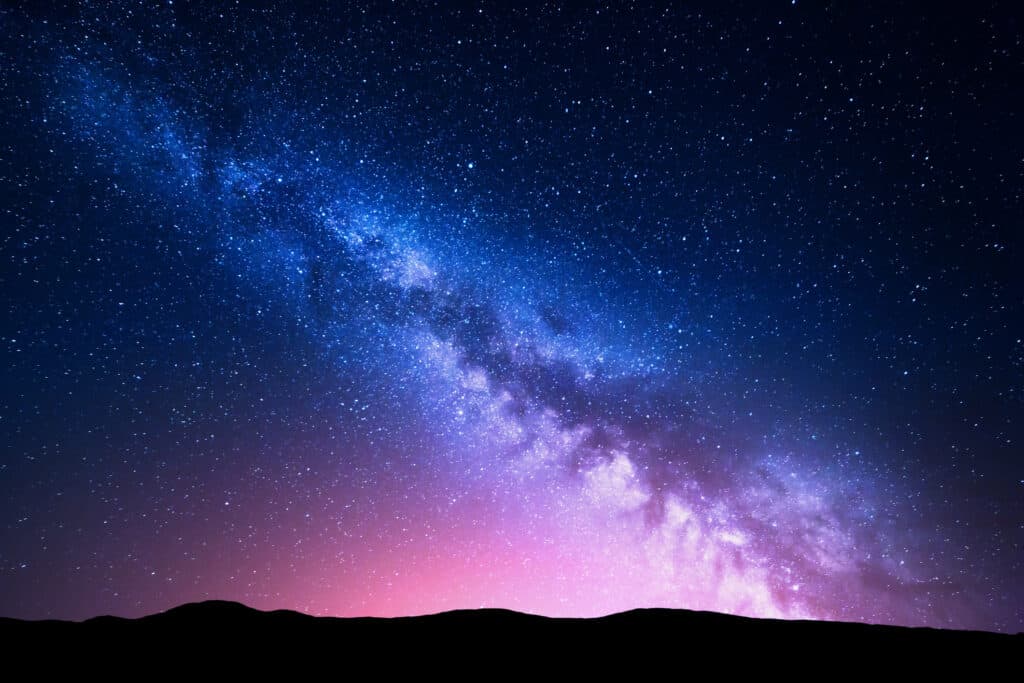When we think about the universe, it can almost be overwhelming. After all, when we talk about the universe, we’re talking about literally everything that exists – all of space and time and everything contained anywhere!
It can be hard to pinpoint the largest thing in the universe because we don’t necessarily have a foolproof way of knowing what it is. Can we really be sure that we have explored everything that exists?
However, right now, humans do have an idea of what the largest thing in the universe is, and it’s pretty fascinating. Read on to learn more about the absolute largest thing in the universe!
The Absolute Largest Thing in the Universe

The absolute largest thing in the universe is the Hercules-Corona Borealis Great Wall, which is about 10 billion light-years across.
©Marc Ward/Shutterstock.com
As far as we know, the absolute largest thing in the universe is the Hercules-Corona Borealis Great Wall. Located approximately 10 billion light years away, this is a galactic filament, which is a very large group of galaxies that is bound together by the force of gravity.
Discovered in November 2013, this group of galaxies is thought to be approximately 10 billion light-years in length. Astronomers made this estimate by mapping gamma-ray bursts that came from this cluster of galaxies.
To give you some perspective, the width of the entire Milky Way galaxy is about 0.001% of that of the Hercules-Corona Borealis Great Wall. The Milky Way is about 100,000 light-years wide.
The Hercules-Corona Borealis Great Wall is a supercluster that is so immense and represents such a massive non-uniformity that it defies the theory of inflation, which is the basis of modern models of the universe.
How Did Scientists Find the Hercules-Corona Borealis Great Wall?

A team of scientists observed an abnormally high volume of gamma-ray bursts that seemed to be concentrated about 10 billion light-years away.
©Pablo Carlos Budassi / CC BY-SA 4.0 – License
In 2013, a team of scientists were looking for gamma-ray bursts. Gamma rays are the strongest and most powerful form of radiation in the electromagnetic spectrum. This type of radiation is actually fairly rare to see, only observed in a few events.
One such event is a supernova, which is the explosive destruction of a star. A supernova involves the release of more energy than the Sun will be able to produce in its entire lifetime!
The purpose of studying these bursts is that they make it possible to locate humongous structures in the universe. Studying these structures allows astronomers to learn a lot about the formation of stars. In addition, these explosions can lead to the formation of planetary systems, such as our solar system.
In 2013, these researchers observed an abnormally high volume of gamma-ray bursts that seemed to be concentrated approximately 10 billion light-years away. They were looking in the direction of the Hercules and Corona Borealis constellations.
The volume of gamma-ray bursts was seen over an angle that corresponded to a width of 10 billion light-years. That is an astonishing 10% of the diameter of the observable universe!
Even the researchers could barely believe what they saw. However, the chances of that collection of gamma rays randomly showing up in that location were less than 1%. Because of this, it is reasonable to believe that the Hercules-Corona Borealis Great Wall exists.
Even though this is thought to be the largest object in the universe now, scientists do acknowledge that there could be larger objects out there.
How Does the Largest Thing in the Universe Defy Logic?

The Hercules-Corona Borealis Great Wall is so large that it defies established principles of physics.
©National Science Foundation / Nicolle Rager Fuller of the NSF – License
The absolute largest thing in the universe is so big that we can barely fathom it, but in addition to this, it actually violates the laws of physics. Cosmologists have always found it notable that the universe is very uniform. For example, the residual heat from the Big Bang appears to be extremely uniform in every direction. Matter in the universe has followed the same rule.
Of course, even though the universe is homogeneous on a large scale, there is some local heterogeneity. For example, there are populations of stars, galaxies, and other collections of matter that are localized to certain areas.
But the overlying principle remains – matter in the universe, overall, is very uniformly distributed. Otherwise, collections of matter would have become attracted to one another. As a result, the universe would have ended up contracting due to its own gravity.
The existence of the Hercules-Corona Borealis Great Wall defies the Inflation Theory of the universe. This theory proposes a period of exponential expansion of the universe at the very beginning. It is thought that an increase in the linear size of the universe by a factor of 1026 took place within only a fraction of a second!
Crucial to this theory is the concept of a homogeneous expanding universe. The reason that the largest object in the universe defies this theory is that this cluster is not uniform. According to the Inflation Theory, matter should be uniform when it’s being observed at a large enough scale.
What Are Some Other Large Objects in the Universe?

There are other large objects in the universe, including the Milky Way, but none come close to the Hercules-Corona Borealis Great Wall.
©iStock.com/den-belitsky
Although no other object in the universe comes close to the Hercules-Corona Borealis Great Wall as far as we know, there are still some pretty amazingly large objects.
For example, there’s Huge-LQG, which held the record for the largest object ever identified in the universe until this record was broken in 2013. This is a cluster of 73 quasars (massive celestial objects giving out humongous amounts of energy). Each of these quasars is believed to be the center of a galaxy from the early universe. This structure is about four billion light-years across.
There’s also the Giant GRB Ring, discovered in 2015 through gamma-ray burst mapping. This structure is approximately 5.6 billion light-years across. It’s thought to have a spheroidal or ring-like shape.
What Are Some Large Objects in Our Galaxy?
Within the Milky Way galaxy, there are some fairly large objects as well. You might be thinking about the Sun and Jupiter, but these are actually quite tiny on a large scale. To give you some perspective, the diameter of the Sun is a mere 1.47 × 10-7 light years.
One of the largest objects in the Milky Way is a gas cloud known as “Maggie.” Maggie was discovered in 2021. This cloud is 39,000 light-years long and located more than 55,000 light-years away from Earth. Maggie is five times bigger than the largest known gas clouds that have been recorded in recent history.
Even though Maggie is absolutely enormous compared to any planet in our solar system, this cloud is tiny compared to some of the massive objects out there in the universe. There could even be an object out there that ends up making the Hercules-Corona Borealis Great Wall look small someday!
Up Next…
The photo featured at the top of this post is © iStock.com/Petrovich9
Thank you for reading! Have some feedback for us? Contact the AZ Animals editorial team.






